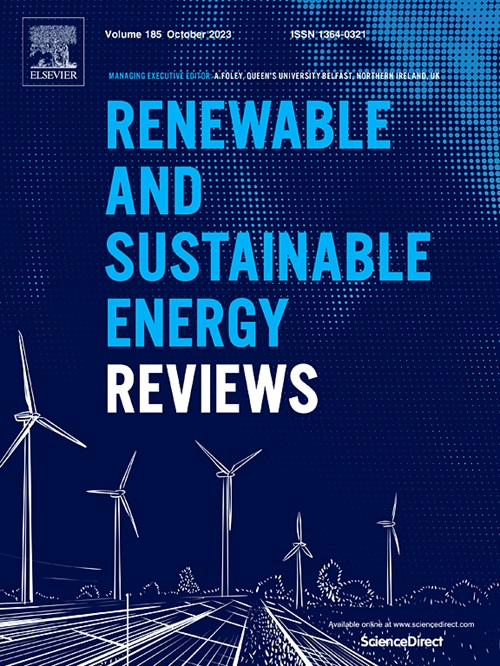A review of flow boiling heat transfer: Theories, new methods and emerging applications
IF 16.3
1区 工程技术
Q1 ENERGY & FUELS
引用次数: 0
Abstract
Flow boiling heat transfer has the advantage of high heat transfer coefficient, and it has been widely used in industrial applications and has great effect on the energy efficiency of equipment, especially for the situation under extremely high heat flux. The heat transfer mechanism of flow boiling can be divided into nucleate boiling and convective boiling. Because of its complicated mechanism and wide use in industrial applications, the heat transfer between two-phase boiling has become a hot and difficult problem so far. This paper presents a review of flow boiling heat transfer, from classic theories to new methods and industrial applications. This paper introduces the mechanisms of flow boiling heat transfer, especially the understanding of nucleate and convective boiling among studies. Moreover, representative correlations and their application range as well as the recent development of machine learning methods are summarized. Finally, the emerging industrial applications are discussed, including transpiration cooling in aerospace, heat pipes in satellite, data center cooling, immersion cooling for severs and batteries. Future research on flow boiling heat transfer will develop towards extreme heat transfer environments such as cross scale, high heat flux, and high temperature. This paper can help readers obtain a general understanding of the current research, prospects and advanced applications on flow boiling.
求助全文
约1分钟内获得全文
求助全文
来源期刊

Renewable and Sustainable Energy Reviews
工程技术-能源与燃料
CiteScore
31.20
自引率
5.70%
发文量
1055
审稿时长
62 days
期刊介绍:
The mission of Renewable and Sustainable Energy Reviews is to disseminate the most compelling and pertinent critical insights in renewable and sustainable energy, fostering collaboration among the research community, private sector, and policy and decision makers. The journal aims to exchange challenges, solutions, innovative concepts, and technologies, contributing to sustainable development, the transition to a low-carbon future, and the attainment of emissions targets outlined by the United Nations Framework Convention on Climate Change.
Renewable and Sustainable Energy Reviews publishes a diverse range of content, including review papers, original research, case studies, and analyses of new technologies, all featuring a substantial review component such as critique, comparison, or analysis. Introducing a distinctive paper type, Expert Insights, the journal presents commissioned mini-reviews authored by field leaders, addressing topics of significant interest. Case studies undergo consideration only if they showcase the work's applicability to other regions or contribute valuable insights to the broader field of renewable and sustainable energy. Notably, a bibliographic or literature review lacking critical analysis is deemed unsuitable for publication.
 求助内容:
求助内容: 应助结果提醒方式:
应助结果提醒方式:


